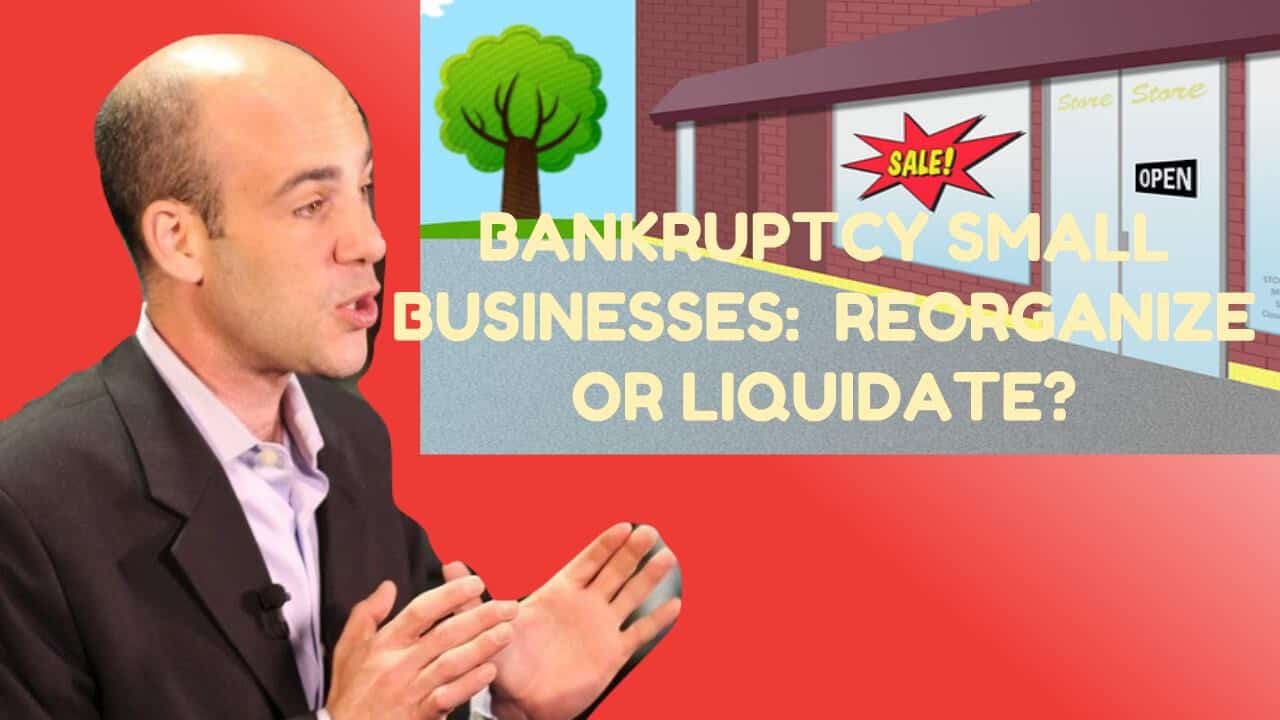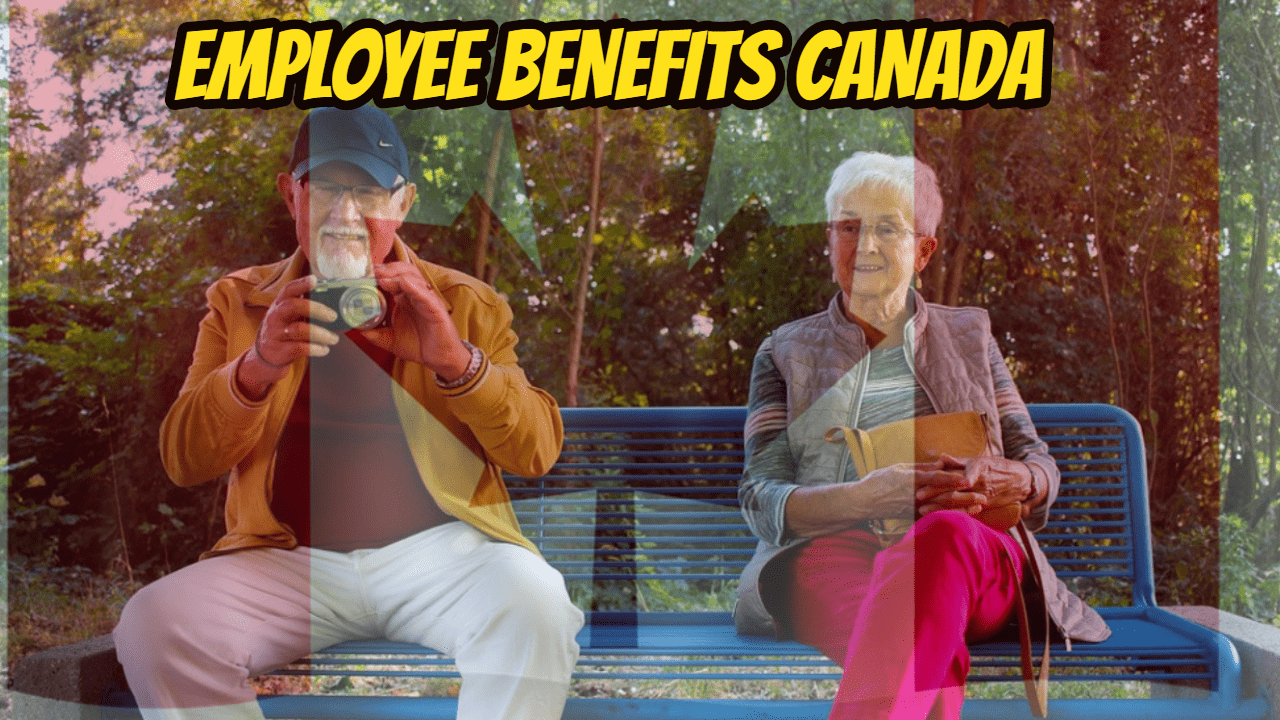[monkeytools msnip=”http://monkeyplayr.com/playr.php?u=5173&p=21424″]
Introduction
Small and medium-sized businesses play a vital role in all worldwide economies. Bankruptcy experts in the USA identified problems. The Chapter 11 bankruptcy protection process for these companies was not working. It is pricey, usually ineffective and impractical. So, many businesses in the USA in need of restructuring could not have access to the US insolvency system.
On July 23, 2019, the US Congress passed the Small Business Reorganization Act (SBRA). On August 1, 2019, the Senate passed the Bill. On August 23, 2019, President Donald Trump signed it to enact it.
The purpose of the SBRA is to make business bankruptcy protection much less troublesome for small and medium-size ventures. The result is Chapter 11, subchapter V of the US Bankruptcy Code (Titled: Small Business Debtor Reorganization). The aim is to make it more affordable and will serve to save otherwise viable owner-managed businesses.
The purpose of this Brandon’s Blog is to discuss the new US legislation. I will also comment on an approach for the Canadian insolvency system. Can we streamline restructuring under the Bankruptcy and Insolvency Act (Canada) (BIA) for small business?
Changes made by the SBRA
A small company is defined in the SBRA as a person or company whose non-contingent debts (leaving out financial obligations to affiliates or people not dealing at arms’-length) are $2,725,625 or less and which chooses to be dealt with under the SBRA. The Act includes a new subchapter V to Chapter 11 of the US Bankruptcy Code. The purpose of this new approach is to make it simpler and more economical for small companies to efficiently restructure.
The main thrust of the Act is:
- A creditor cannot lodge a Chapter 11 restructuring plan that it is prepared to support. Just the business can. The company’s plan must be filed within 90 days of the day it filed its bankruptcy protection application, other than in specific conditions.
- A trustee comparable to those selected in a personal restructuring (Chapter 13) situations will be selected to manage each case.
- A creditors committee will not be developed.
- The Chapter 11 plan can change the legal rights of a lender registered against an individual’s primary home if the mortgage/funding secured by the home was used in the person’s business and was not financing used to purchase the property.
- The Court can approve a small business’ restructuring plan without the approval of any class of creditors. The Court must be satisfied that the restructuring plan treats all creditors fairly and does not prejudice any creditor class.
- To be fair and equitable, the restructuring plan must offer that all earnings received throughout the term of the restructuring plan will available to fund the restructuring for a duration of 3 to 5 years.
So the onus is on the creditors to carefully review all cases filed under the SBRA. Creditors will need to retain bankruptcy experts to advise them. Their role will be to make certain that Courts appropriately examine restructuring cases for fairness and that they treat all creditors equitably. This will be especially true for those that do not have the support of the creditors.
It will be very interesting to see if this new legislation accomplishes its goal of making it simpler and less costly for small businesses to restructure and continue.
The Canadian business restructuring landscape
There are two federal statutes that legislate business restructuring in Canada. They are the Companies’ Creditors Arrangement Act (R.S.C., 1985, c. C-36) (CCAA) and the Part III Division I of the Bankruptcy and Insolvency Act (R.S.C., 1985, c. B-3) (BIA).
To qualify for restructuring under the CCAA, the insolvent corporation must owe at least $5 million. The CCAA is only for insolvent companies or income trusts to restructure. It is not for:
- proprietors or partnerships
- banks
- telegraph companies (do people still send telegrams?)
- insurance companies
- companies to which the Trust and Loan Companies Act applies
Proceedings under the CCAA are a very heavily Court-driven process.
Restructurings under the Part III Division I proposal provisions of the BIA are available to both companies, proprietors and partnerships. It is also available to people who owe $250,000 or more, not including any mortgages or loans secured by the person’s principal residence.
For people who owe less than $250,000, a more streamlined restructuring process is available under Part III Division II of the BIA. These are called consumer proposals.
Restructuring under the proposal provisions of the BIA is not a heavily Court-driven process like the CCAA. Under consumer proposals, if all goes smoothly there is never a Court application.
So we have a simpler and streamlined version for people who have a smaller debt level but are still in need of restructuring their financial affairs. The same is also true for people with fewer or no assets that need to start over through the bankruptcy process. However, there is no equivalent streamlined version in Canada for small to medium-size businesses.
Could such a streamlined business restructuring model be developed? Not only do I think it could be, as one of the bankruptcy experts in Canada holding the designation of licensed insolvency trustee, I think it must be.
The statute for a streamlined Canadian business restructuring model
The CCAA is designed for large corporations. As I already stated, it is a heavily Court-driven process. Therefore, I think this eliminates the CCAA from developing a more streamlined version. It is not the case that it could not be done. It is just that a new section designed for simpler and more cost-effective CCAA proceedings goes somewhat against the purpose of the CCAA.
Therefore, I propose that CCAA legislation should remain available only to larger companies. Especially because the BIA, another federal statute, already includes restructuring provisions. It already has a streamlined version for bankruptcy and restructuring to avoid bankruptcy. So, why not a streamlined business restructuring section?
What would BIA streamlined business restructuring look like?
You might ask, why is this even necessary? Many small and medium-sized businesses are family-owned. There are even very large family-owned businesses. The Financial Post reports that “Family businesses own a bigger chunk of Canada’s economy than you think — way bigger”. They report it is a significant business sector contributing 35 percent of Canada’s real gross domestic product.
So with such an important business sector, it would make sense to allow those businesses on the smaller scale to qualify to have a simpler and more cost-effective way to restructure when they hit a financial bump in the road. If the viable parts of the business can be saved, it will continue to employ people, allow families to have a good quality of life and contribute to Canada’s GDP. It does not make sense to essentially kill off these smaller businesses because the cost of the restructuring will use up all the resources necessary to run the business.
I am not talking about family-owned businesses Bombardier Inc. and Loblaw Cos. Ltd. Rather, I am talking about the majority of Canadian entrepreneurial companies in the mid to small size range.
So here is what I propose for a streamlined restructuring process for small and medium-sized businesses. I will call it a new Part III Division III of the BIA. I will call it the General Scheme for Small Business Proposals (SBP) section of the BIA.
Size matters
The new SBP should be available to corporations, proprietorships and partnerships that are set up to conduct business. Their total debt should not be more than $1.5 million. There is nothing scientific about this number.
Statistics Canada could do an analysis as to the average debt load of Canadian businesses and an appropriate debt level could be picked based on it. For purposes of this Brandon’s Blog, I will use the $1.5 million amount.
I would not exclude loans from affiliates or people not dealing at arms’-length such as in the US legislation. In Canada, it is normal for the first funding of a company to come from the owners. Our chartered banks want to see a commitment from the owners before they will lend. Owners have sacrificed their own money to get the company off the ground. Just because that is how they had to finance the company, I would not preclude that debt from counting in the calculation.
The Canadian business landscape is different from that in the USA. Our numbers are generally smaller. In order to exclude non-arms’-length debt, you would probably have to lower the debt threshold I have mentioned. So, let us keep that debt threshold for discussion purposes and include all debt; secured or unsecured, arms’-length or related parties and owners.
If a person is not conducting business in his or her name, then this new SBP would not be for them. They would fall under either Division I or Divison II restructuring proposals.
Administration of restructurings under the SBP
Currently, only a licensed insolvency trustee (formerly called a bankruptcy trustee) (LIT) can administer restructuring proposals. Under Division I Proposals, the LIT is called the Proposal Trustee. Under consumer proposals, Division II personal restructurings, the LIT is called the Administrator.
So, for the new SBP, I will call the LIT the Small Business Administrator. It makes it obvious that it is the restructuring of a business qualifying under the new Division III. The use of the word “administrator” ties nicely into the word chosen already by Parliament for consumer proposals. So again, it makes it obvious that the LIT is administering a small business streamlined restructuring.
Since we are not talking about personal restructuring that falls under the consumer proposal provisions in this Brandon’s Blog, my suggestions for a streamlined business restructuring applies only to Part III Division I of the BIA Proposal restructurings to avoid bankruptcy.
Time to restructure
Under a Division I Proposal restructuring, the company or person can begin the restructuring process by filing either a Notice of Intention To Make A Proposal (NOI) or the Proposal itself. Under either filing, the debtor then has 10 days to file its cash-flow statement reviewed and approved by both the company or person and the LIT. Under an NOI filing, the company or person then has an additional 20 days (30 days after the NOI filing date) to file a Proposal (unless the time is extended by Court Order).
Most times with small to medium-sized businesses, the debtor is not current in all of its filings with the Canada Revenue Agency (CRA). This includes payroll remittances, HST and perhaps even income tax returns. In any restructuring where CRA is a creditor, they need to have the most current information from the debtor’s business filings, to be able to know the full amount owing by the business. They will not be able to properly assess the Proposal until they know the proper amount owing to them.
Also in any Proposal restructuring, we want to have a provisional income tax return prepared by the external accountant for the business. The provisional return is to show if any further tax liability exists for the fiscal year up to and including the date of filing of the Proposal.
Books and records will first have to be brought up to date. Then the accountant will need time to prepare and file the income tax return. There is a reason for this. We want CRA to know if there is a further liability.
Although there is no statutory provision allowing for this, CRA so far on an administrative level will allow for a split tax year in a restructuring. The liability for the fiscal year up to and including the Proposal date will be included as a debt in the restructuring. This is to the company’s or person’s advantage in the business.
Once the Proposal is filed, the meeting of creditors has to take place within 21 days of the Proposal date. In my experience, there is never enough time for the business to do all the necessary filings for CRA that I just mentioned. So, CRA always requests an adjournment of the meeting until such time as all the filings are up to date.
So, in my proposed streamlined version, I would propose to extend the filing of a Proposal after the filing of an NOI from 30 days to 90 days, without the need for the expense of going to Court seeking an extension. This should give enough time for the business to get all of its filings up to date and hopefully avoid the need for an adjournment of the meeting of creditors.
Creditors
There really is nothing that needs to be changed on how creditors file their claims. The same is true for the rules of how the LIT must assess all claims. I do like the idea in the new Chapter 11 subchapter V. That is the ability to change the legal rights of a lender registered against an individual’s primary home if the mortgage/funding secured by the home was used in the person’s business and was not financing used to purchase the property.
In Canada, it is very rare, if not unheard of, for an entrepreneurial business to get a bank loan without the owner giving a personal guarantee. Many times the personal guarantee has to be backed by a hard asset, such as a pledge of the personal residence. If the secured debt can be restructured, shouldn’t the pledge agreement on a personal asset also be part of that restructuring?
So, I propose that in the new SBP, there should be the ability to change the legal rights of a lender registered against an individual’s primary home if the funds were used for the business or if the pledge was in support of a personal guarantee for funds borrowed by the business.
The types of changes to the security pledge will be unique to the individual restructuring. It has to make business sense and common sense. It is always up to the secured lender to vote against the plan if they don’t like it. In that case, the restructuring will fail. There will be great pressure on the business to bring forward the best possible restructuring plan and not go crazy on what changes the owner wants to make to the pledge of security.
Deemed acceptance and approval
Without going into all the rules, under the current consumer proposal legislation, there is the concept of deemed creditor approval and deemed Court approval. Unless creditors holding 25% in value of the proven claims request it, there is no need to hold a meeting of creditors. Creditors are asked to vote by way of voting letters when they file their proof of claim. If no obligation to call a meeting arises, then the consumer proposal is deemed accepted.
If a consumer proposal is either accepted or deemed accepted by the creditors, then there is probably never going to be a need for the LIT administrator to formally seek approval by the Court. The BIA reads that after the acceptance or deemed acceptance, the consumer proposal is deemed accepted by the Court unless the Official Receiver or “other interest party” requests it within 15 days after the date of (deemed) acceptance.
Currently, under a Division I Part III restructuring Proposal there are no deeming provisions for either creditor acceptance or Court approval. I would like to see in the new SBP section, that similar deeming provisions for both creditor acceptance and Court approval be implemented. This will save time and cost thereby being much more efficient.
No deemed bankruptcy
In a Division I Proposal, if the creditors do not accept the restructuring, or the Court does not approve it, then the debtor is automatically deemed to have filed an assignment in bankruptcy. There is not a similar provision for consumer proposals.
If the creditors do not accept a consumer proposal, then it just dies then and there and the debtor goes back to their normal unprotected state.
My proposal for the new SBP is that if the creditors do not accept or the Court will not approve the restructuring plan, that does not produce a corporate or personal bankruptcy. Rather, the debtor just goes back to their normal unprotected insolvent state and they have to fend off their creditors as best as possible.
It may lead to bankruptcy, but that will not be automatic. In some corporate situations, the cost of a bankruptcy proceeding just does not make sense. This is especially true if a chartered bank has security over all of the assets and will be enforcing its security through a receivership.
Directors/Owners
Right now a corporate restructuring Proposal allows for Directors to be released from debts that arise prior to the date of filing the Proposal. The kinds of debts that a Director can be released from are those solely resulting from their role as a Director. In other words, generally statutory claims they would be legally liable for.
As I already mentioned, more often than not, the only way a small or medium-sized company can get a bank loan is if the entrepreneur personally guarantees the debt. There are times where a corporate restructuring can be done, but the secured debt arrangements will have to be amended. If the lender is not willing to amend the personal guarantee security arrangements in place, then, the corporate restructuring does not make sense.
So in my dream of the SBP, if a secured lender agrees to a restructuring of their debt, then the Director(s) who may be personally liable will now be responsible for the revised secured lending arrangement. This would also go hand in hand with my proposed change to the ability to change the legal rights of a lender registered against an individual’s primary home if the mortgage/funding secured by the home was used in the person’s business and was not financing used to purchase the property.
Bankruptcy experts summary
So there you have it. The US government saw fit to add to its Chapter 11 bankruptcy protection statute to allow smaller companies to restructure. My vision for a Canadian version is the SBP section to form a new Part I Division III for the BIA.
To summarize, the changes to allow for a more efficient and less costly way to restructure smaller businesses would include:
- The brand-new SBP will be offered to companies, proprietorships and partnerships that are established to run a business. It will be available to businesses with any kind of debt not greater than $1.5 million.
- A LIT who will be called a Small Business Administrator, will oversee and be responsible for the business restructuring.
- The time for the filing of a Proposal after the filing of an NOI will be extended from the current 30 days to 90 days. This will be without the need and cost of a Court application.
- There ought to be the capability to transform the rights of a lending institution who has taken an entrepreneur’s home as security for a business loan or personal guarantee of such financing and the funds were put into the business.
- Deeming provisions for both creditor acceptance and Court approval be implemented. It is already done in consumer proposals, so why not in streamlined business proposals? This will result in more efficient and less costly restructuring.
- If the creditors’ decline or the Court will not approve the restructuring, that will not generate a corporate or personal bankruptcy. Instead, the debtor simply returns to their vulnerable financially troubled state and they will need to deal with their creditors as best as possible. In some cases it may lead to either bankruptcy or just a closing down of the business. Where there is a secured creditor, it will lead to the enforcement of their security. Either way, it won’t be an automatic bankruptcy.
- A Director of a corporation can be released not only from statutory obligations arising from their office of Director. That person, or any other person, can have their guarantee of a debt to a lender be amended if the related business debt is amended in the restructuring.
There no doubt will be other areas that would need amending once all the relevant sections of the BIA were looked at. These are my ideas of the major amendments that could be made to the BIA, to allow for a more streamlined and cost-efficient restructuring for small and mid-sized businesses.
What about your business?
The financial restructuring process for either a large or small business is complex. The Ira Smith Team understands how to do a complex corporate restructuring. However, more importantly, we understand the needs of the entrepreneur. You are worried because your company is facing significant financial challenges. Your business provides income not only for your family. Many other families rely on you and your company for their well-being.
The stress placed upon you due to your company’s financial challenges is enormous. We understand your pain points. We look at your entire situation and devise a strategy that is as unique as you and your company’s problems; financial and emotional. The way we dealt with this problem and devised a corporate restructuring plan, we know that we can help you and your company too.
We know that companies facing financial problems need realistic lifeline. There is no “one solution fits all” approach with the Ira Smith Team. That is why we can develop a company restructuring process as unique as the financial problems and pain it is facing. If any of this sounds familiar to you and you are serious in finding a solution, contact the Ira Smith Trustee & Receiver Inc. team today.
Call us now for a free consultation. We will get your company back on the road to healthy stress-free operations and recover from the pain points in your life, Starting Over, Starting Now.














